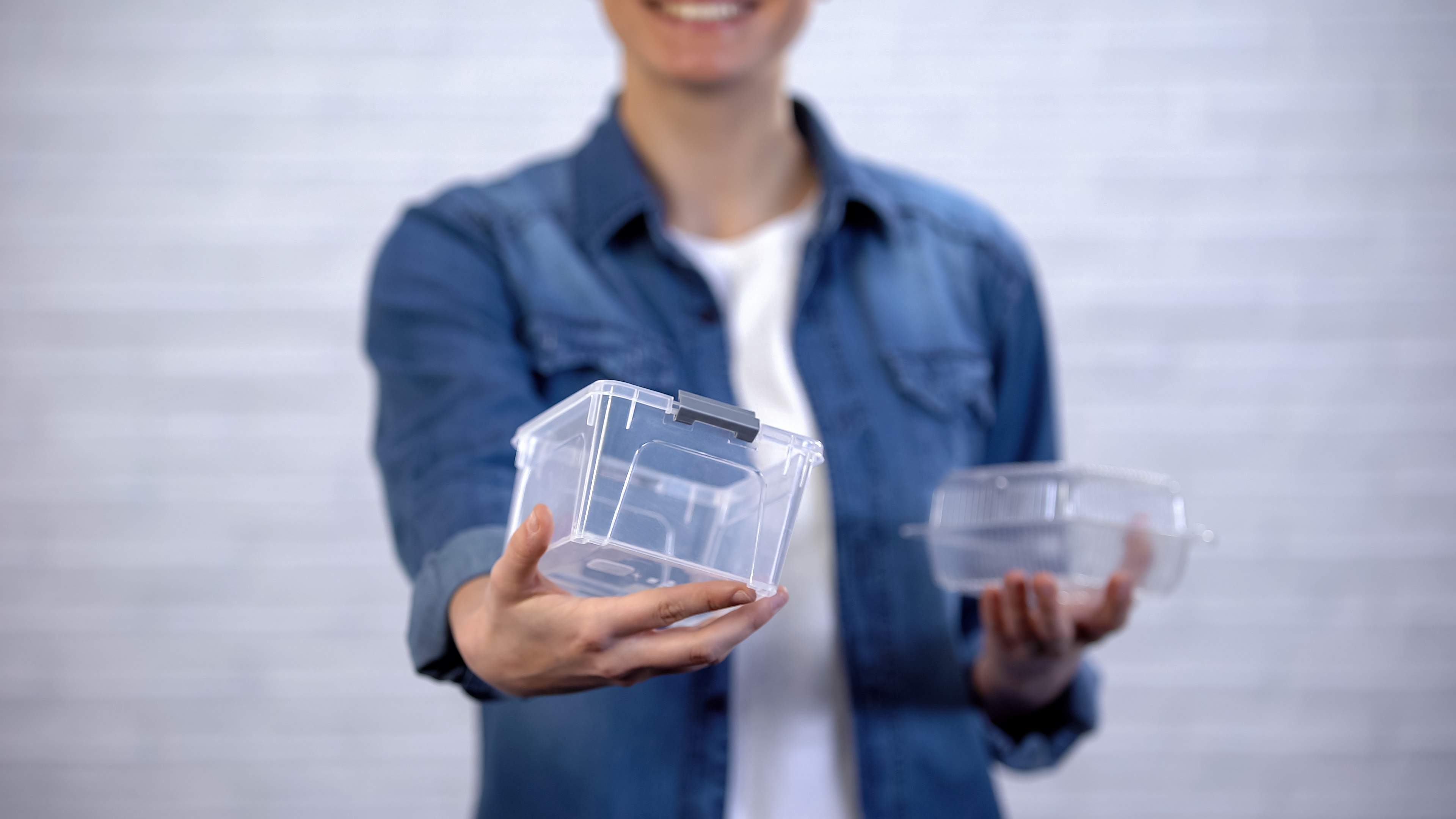What are biodegradable plastics?

Plastics are everywhere, with applications ranging from dispensing medicine to making vehicle parts and packaging items. Despite their versatility and benefit to society, their sustainability is continuously questioned, and more eco-friendly alternatives are highly sought after.
This article will introduce you to the different types of plastic alternatives, their origins, uses, and environmental sustainability.
What are bioplastics?
Bioplastics are a family of materials made from renewable resources, rather than fossil origins (which are not renewable). A substance is a bioplastic if it is bio sourced. Bio-sourced means from biomass such as vegetable fats and oils, corn starch, straw, etc.
But this doesn’t make the bioplastic necessarily biodegradable. These green plastics are considered to be a viable alternative to ordinary plastics
Bio-sourced vs. Biodegradable Plastics vs Recycled plastics
These three terms all mean different things. The average user of plastic products is often confused by the terms ‘bio-sourced’ and ‘biodegradable’ plastics. So, let’s clear that up right away.
Bio-sourced Plastics
Pros
Bio-sourced or biobased plastic refers to the origin of the material used to make the plastic. These are made from renewable sources that can be replenished
- Making bioplastics lowers the carbon footprint of manufacturing
- Some bio-sourced plastics are compostable and fully biodegradable (see paragraph on biodegradable)
Cons
- Not every bio-based plastic product is biodegradable
- Bio-based plastic can still form pollutant end of life products with improper disposal
- Bioplastics can induce higher eutrophication potentials than conventional plastics
Biodegradable Plastics
Biodegradable means that the material can be decomposed by biological organisms (bacteria, fungi, algae, etc.) in a favorable environment (temperature, humidity, light, oxygen, etc.).
Biodegradation in an aerobic and/or anaerobic environment can happen under different conditions:
- industrial composting (in specific plants where temperature and humidity and other criteria are controlled),
- home composting (where conditions are not at all controlled).
Though a compostable product is necessarily biodegradable, a biodegradable product is not necessarily compostable. Cfr. European Standard EN 13432 which lays down criteria for what can or cannot be described as compostable and what can be called biodegradable.
Pros
- Under the right conditions, plastic degradation releases harmless by-products
- Safer to recycle since they do not contain harmful chemicals or toxins
Cons
- Discarded biodegradable plastics do not break down in a landfill
- Since most degradable plastics are plant-based, traces of pesticides used on the plants may show up on the finished product
Recyclable Plastics
Recyclable plastics can have renewable or not renewable origin. For example, PLA is compostable and recyclable. And PP is not bio-based but can be recycled.
To learn more about this topic, read this article focused about recyclable plastics.
Bio-sourced plastics does not guarantee biodegradable plastics.
As we established, bio-sourced and biodegradable plastics do not mean the same thing. A study published in the International Journal of Environmental Research and Public Health (IJERPH) found that detergent pods create a plastic pollution problem.
Ambiguous marketing jargon contributes to this problem. Buyers unknowingly use detergent pods to switch to sustainable plastic packaging. However, this “eco-friendly” packaging leaks unprocessed polyvinyl alcohol (PVA) into the environment.
The contaminant may also find its way into our food chain.
The study is a wake-up call and a criticism to product manufacturers who make false environmental safety claims. People should be made aware that a lot of the bioplastics packaging is not necessarily biodegradable.
Here some examples of plastics and their characteristics:

How to Identify a Truly Biodegradable Plastic?
At the beginning of the bioplastic’s phenomena, there was a lack of agreement on what makes biodegradable plastic. More importantly, there was a lack of a specific timeframe for decomposition in the environment.
Here are some pointers to help you identify a genuinely biodegradable plastic:
- Biodegradable plastics are often marked with a “7” while recyclable ones contain numbers “1” or “2”
- Compostable plastics break down in the soil and form humus preferably within a short time, (depending on the environmental conditions).
Water Soluble Plastics
When water-soluble plastics meet water, they dissolve or disperse in it. These substances modify the properties of the aquatic environment by foaming, thickening, or stabilizing.
Criteria for Water-Soluble Plastics
The main ingredient of water-soluble plastics is polyvinyl alcohol (PVA). The component is odorless, water-soluble, and often biodegradable.
- Water-soluble packaging dissolves in cold water
- The product dissolves quickly (within five minutes)
- Any bag not dissolved should compost or within six months under favorable conditions
Benefits of Water-Soluble Plastics
- Unique consumer experience- It is quick and convenient to use the pre-measured quantity you need
- Increase safety and protection- products dissolve in water minimizing risks to plants and animals
- Functional and process advantages- Reduces the amount of material used for packaging and waste
- No visible residue- When made of biodegradable film, the residue is bio-composed within three months
The solubility of PVA in water depends on its molecular mass, tendency to form a hydrogen bond with the water, and degree of hydrolysis.
When the plastic film dissolves in water, it doesn’t break down the structure of the PVA molecules. The little bits of plastic from the PVA molecules now float around the water. This is the very definition of microplastics which have grave consequences for aquatic life. So can PVA truly be considered as environmentally-friendly?
PVA is not as safe as you think!
People are continuously led to believe that PVA is 100% water-soluble and safe for the aquatic environment. However, the scientific study by IJERPH disputed the claim that PVA is fully biodegradable. The research found that PVA acts as a pollutant in various negative ways.
First, it sequesters heavy metals from soil sediments and then leaches into groundwater reservoirs. These chemical compounds get swept by stormwater and wastewater into water bodies. Some heavy metals are known to be carcinogenic.
Secondly, ethylene is a byproduct of PVA degradation. When exposed to plants, the excess ethylene hormone interferes with plant growth and response to stimuli. In regular doses, plants use ethylene as a development hormone.
Thirdly, PVA eventually degrades, producing foam. Foam interferes with oxygen and carbon dioxide exchanges in aquatic environments. This poses life-threatening risks to organisms living in the water.
All this considered, PVA might not be the eco-friendly solution to the pollution by non-biodegradable plastic.
Non-Plastic Polymers:An emerging alternative.
Recently, a new technological innovation has emerged, made entirely of biopolymers. Casein-based polyester has a great potential to become the next plastic-free alternative.
Non-plastic polyester is unlike regular polyester because of a structural alteration. Its polymers come from milk proteins called casein.
This technology produces completely soluble and biodegradable polyester. And unlike plastic, it is edible.
Casein-based polyester can seamlessly be incorporated into manufacturing processes that use plastic. Although non-plastic, the material displays plastic properties and is suitable for various applications:
- Water-soluble laundry bags for hospitals,
- Temporary labels that dissolve in water
- Fragrance beads
- Soluble detergent tabs
- Soluble concrete and dye packages
The final test of a genuinely sustainable alternative to plastics is how fast it degrades into the environment. Casein-based polymer products fully degrade in 19 days: cellulose breaks down 80% of its structure within this timeframe, compared to PVA which breaks down four times less: 20%.
Conclusion
The search for viable, sustainable plastics alternatives came a long way. Bioplastics produced some positive results in lowering the manufacturing carbon footprint. However, improper disposal of biodegradable and recyclable products creates more pollution problems.
Entirely natural, biodegradable, and less costly to produce, non-plastic polyester made from casein has a great potential to overcome the drawbacks of other bioplastics alternatives.






